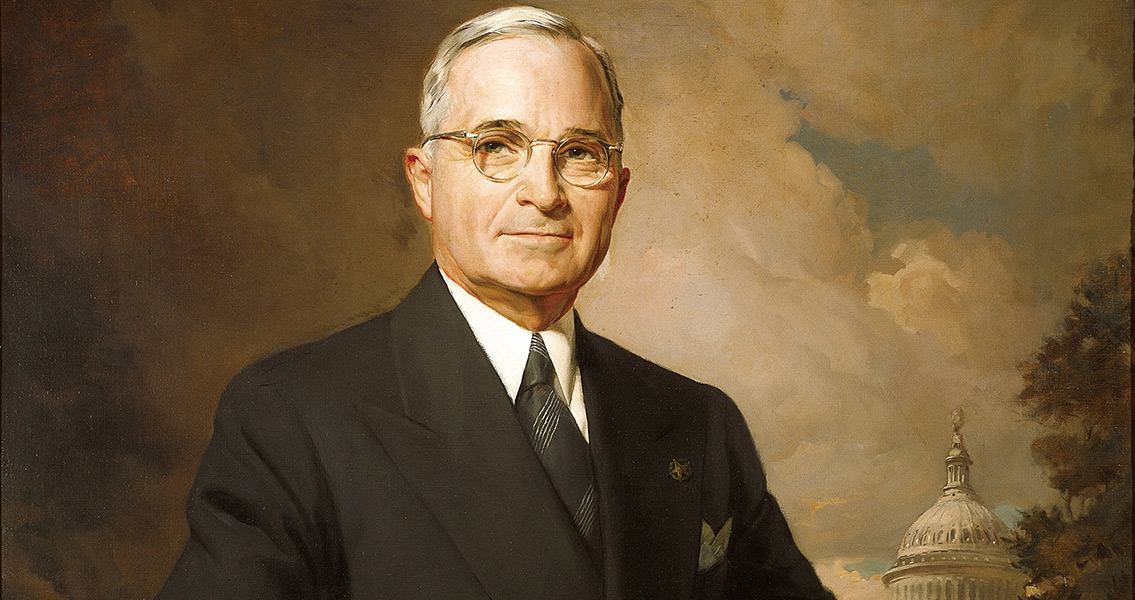<![CDATA[In an audacious move, US President Harry S. Truman issued an executive order on 25th August 1950 putting the United States' railroads under the control of the army. Designed in the short term to keep the United States' infrastructure operating during a perilous period, Truman's firm approach had the long term affect of striking a demoralising blow against the labour movement, which had been burgeoning in the aftermath of the Second World War. Truman's actions were an anticipatory move, designed to break a major strike on the country's railroads before it had even begun. The executive order stated that from 4:00 pm on the 27th August 1950, all railroads in the US would be under the authority of the army. Often considered one of the biggest supporters of business in the history of the US Presidency, Truman's firm stance on industrial action shouldn't be a surprise. He had demonstrated a ruthless streak earlier in his term when it came to negotiating with workers, but also knew that a shut down of the rail networks had to be avoided at all costs. Almost as soon as word started to spread that two of the United States' biggest labour organisations: the Brotherhood of Railroad Trainmen and the Order of Railway Conductors, were planning to conduct a strike, Truman sprung into action. In July 1950, he ordered the creation of an emergency board to negotiate a settlement between railroad unions and owners. Representatives of the union ultimately rejected the recommendations of the board, and began to make preparations for a massive strike. Truman moved quickly to outmaneuver the strikers, knowing that if the railroads could be kept running the unions biggest bargaining chip would be rendered useless. In a speech on 25th August he declared that, "governmental seizure [of the railroads] is imperative." for the protection of American citizens. "essential to the national defense and security of the Nation." Unfazed, the strikers went ahead anyway. For twenty months, until May 1952, they stayed off of work, yet the presence of the army meant their strike had little real impact. The President justified his forceful tactics as a matter of national security. The USA had just entered the Korean War, and the railroads were a vital piece of infrastructure for ensuring materials and supplies could be transported through the country. Rail networks were treated as a crucial part of the war effort, and a strike which could shut them down was deemed a threat to the United States. In 1946, Truman had deployed similarly ruthless tactics when both coal miners and railroad workers embarked on a nationwide strike. After the unions had rejected a settlement, the President ordered the army to seize control of the railroads. In May of that year he issued an ultimatum declaring the government would operate the railroads and use the army as strike breakers. When the strikes continued unfazed, the President applied to Congress for the power to draft strikers into the armed forces. Before Congress could reach a decision, the strikes were resolved when the workers agreed to the earlier settlement. Truman's firm tactics in 1950 achieved their goal. Employees from the railway unions eventually returned to work having failed to win the concessions they desired. The years after the Second World War had seen a surge in industrial action in the United States, as soldiers returning from the horrors of war demanded better working conditions at home, while those who had kept US industry running during the conflict felt their efforts deserved greater reward. Although officially carried out to maintain the US war effort in the Korean War, Truman's victory would prove a devastating blow to the momentum of the growing labour movement. ]]>
Truman Seizes Control of Railroads in Heavy Blow to Strikers
